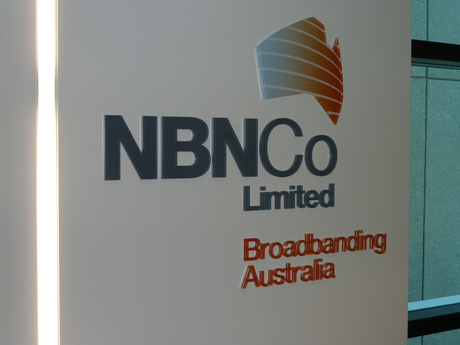NBN Co to adopt multitechnology mix by 2015

NBN Co last week commenced the transition to a revised rollout model incorporating a mix of connection technologies, with the aim of kicking off a multitechnology NBN rollout in calendar 2015.
The company has started the complicated process of negotiating changes to its NBN agreement with Telstra, and has entered preliminary talks with Optus covering the revised NBN plan.
Existing fibre-to-the-premise (FTTP) rollouts will continue throughout this year, and NBN Co said it plans to keep issuing construction orders over the transition period.
The new NBN rollout will prioritise homes that still remain under-served by fixed broadband, as identified in research commissioned by the Department of Communications into the availability and quality of broadband in Australia.
Communications Minister Malcolm Turnbull told Fairfax Media last week that filling broadband blackspots needs to be prioritised. “One of the key rationales for a national broadband network must be to provide services to areas where the market, on its own, has not,” he said.
According to a summary of the soon-to-be-published report, around 13% of Australian premises are in areas where fewer than 40% of the population can access a fixed broadband service.
This translates to around 6% of premises, or 700,000 homes, that have no access to broadband whatsoever. These premises are located in remote or regional areas, or in small pockets of metropolitan areas with poor service.
The report also shows that only 28% of Australian premises have access to high-speed broadband technology, including fibre, hybrid fibre coaxial (HFC) and fixed wireless networks. The majority of premises (7.1 million or 65%) have access to peak download speeds of less than 25 Mbps.
With the revised geographic rollout road map taking shape, the next stage is determining the technology mix to be used in the NBN.
NBN Co revealed it is negotiating a supplemental agreement with Telstra that will allow it to use Telstra’s copper network to conduct a series of technology trials that will inform the mix for the final rollout.
These include a fibre-to-the-building (FTTB) pilot in ten Melbourne apartments and office complexes. NBN co will also conduct a fibre-to-the-node (FTTN) build pilot in Umina, NSW, and Epping, Victoria. Once the build is complete, it will work with retail service providers on a FTTN end-user trial at up to 100 premises in each location.
NBN Co’s strategic review, published in December, provides an indication of the final shape of the network. In the report, the company proposed a revised rollout model that would see the network deliver wholesale speeds of “up to 50 Mbps” to 90% of Australia’s fixed-line footprint by 2019.
The review recommends that NBN Co adopt a mix of connection technologies based on the expense of rolling out fibre to a particular area. The report suggests that the optimal mix could involve maintaining the FTTP rollout to between 20% and 26% of premises.
Fibre to the node, distribution point or building could be used for 44% to 50% of premises, and HFC for around 30%. Premises outside the fixed-line footprint would continue to be served primarily by wireless and satellite technologies.
The report claims that adopting a technology mix would lead to the NBN generating an extra $7-8 billion in revenue for the period between FY11 and FY21, as compared to a revised estimate of the all-FTTP model. But the mixed approach would generate less revenue in later years.
The multitechnology mix approach would require peak funding of around $41 billion. This compares favourably to the $72.6 billion peak funding estimate for the original project used in the report, but not to the $37.4 billion estimate from Labor. During the election campaign, the Coalition had insisted that Labor’s version of the NBN would cost more than $90 billion.
NBN Co released its financial statements for the first half of the 2013-2014 financial year last week, revealing its revenue for the period grew 63% to $47.8 million. Capex increased by 50% to $1.19 billion, with operating costs growing 50% to $500.4 million. The company’s total operating loss was $715 million.
As of the end of the calendar year, there were 130,759 premises with an active NBN service, including 80,007 fibre users. NBN Co has set a target of having 357,000 premises connected with fibre by the end of June.
Hybrid environments are here to stay: ensure your technology is ready
These days it seems like it is all about software — so much so that software's integral...
Next-gen wireless network for PCEC
Perth Convention and Exhibition Centre has selected Hewlett Packard Enterprise HPE Aruba...
Intelligent networks: a software-defined future
No matter how sophisticated your technology and people are, they will only reach their full...




